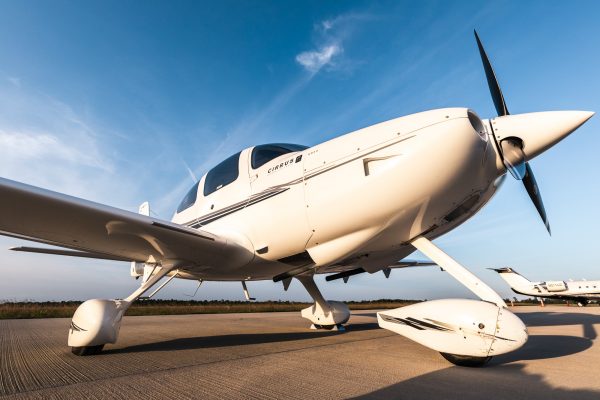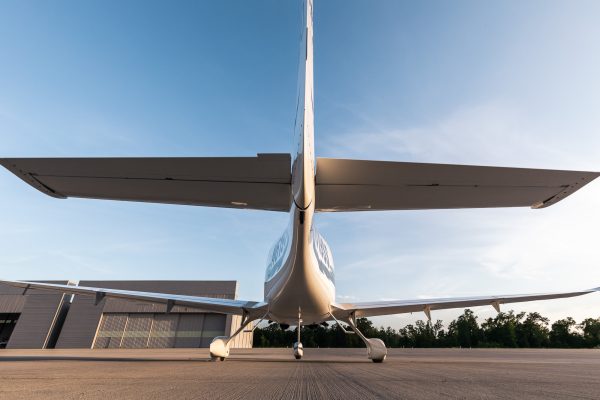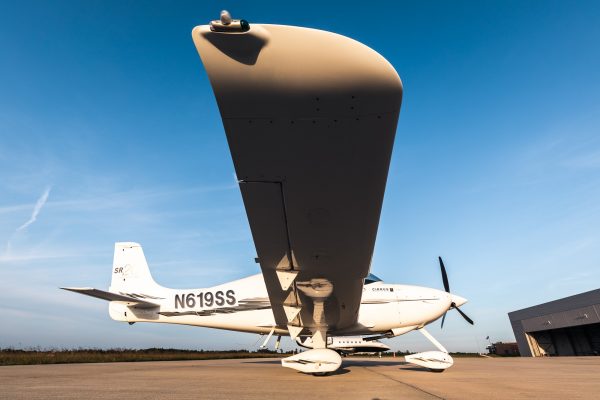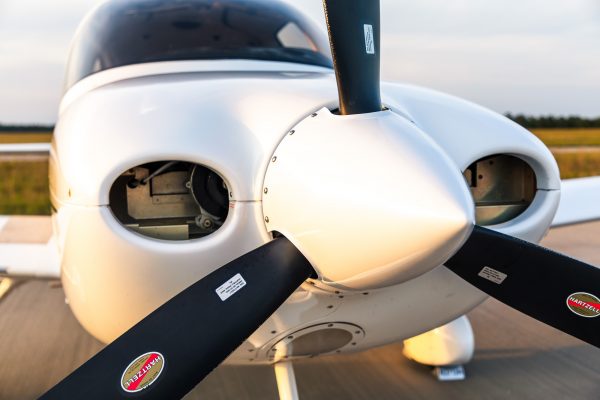High Performance Aviation
Piston Engine Aircraft Market
Changes in the piston engine aircraft market are often reflected in the ceaseless amount of purchasing agreements between large flight training providers and aircraft manufacturers across the country. Thanks in part to the scale of many of these programs, orders from large aviation academies can make up a big portion of yearly aircraft sales. Although there are a few outliers, this is a market dominated by three major players: Textron, Cirrus, and Piper. As these companies and more continue to innovate and compete for lucrative contracts, the general aviation community reaps the benefits. Like many of us, flight schools generally look for aircraft that can offer a generous combination of durability, safety, and performance. As the wants and needs of aircraft owners evolve, it is often the biggest customers that have the most influence over how the manufacturer reacts. Aspiring aircraft owners can derive hidden value out of peering into the flight training market every once and a while to identify emerging purchasing or selling trends before settling on any given manufacturer, make, or model.
 |
ATP Flight School is a great case in point. Across its 58 flight training centers scattered around the country, ATP owns and operates over 400 total aircraft. ATP’s fleet consists of 90 Piper PA-44 Seminoles, 155 Piper Archer TXs, and 180 Cessna CE-172 Skyhawks. According to their website, 60% of their aircraft were manufactured within the last 6 years and more than half are equipped with Garmin glass flight decks. ATP is very keen on investing in the most modern and in-demand aviation equipment which makes its fleet a great trend indicator throughout its 37-year history. 10 years ago, ATP owned 57 Cessna 172s, 88 aircraft from Piper, and a few Diamond DA-40s. Besides the Diamonds being offloaded, the composition of the overall fleet hasn’t changed much. In 2011, Piper aircraft made up 59% of ATP’s training fleet. Today, the Seminole and the Archer TX represent 58% of the 425 ATP aircraft on the flight line with Cessna 172s being the remaining 42%.
Driven by an increase in demand due to an anticipated commercial pilot shortage, ATP has remained proactive when it comes to upgrading and increasing the size of its fleet. In 2019, ATP ordered an additional 100 Cessna Skyhawks from Textron to replace their older 172s and expand their fleet. “The new agreement with ATP demonstrates that the Skyhawk continues to be the world’s definitive training aircraft for future pilots,” said Textron Aviation Vice President Chris Crow. Since its debut in the 1950’s, more than 40,000 Cessna 172s have been built and sold and this rate of production doesn’t seem to be losing any steam. As evidenced by this massive order, the Cessna 172 remains a dependable and versatile aircraft to own and/or train in.
 |
Since its inception nearly 40 years ago, Embry-Riddle Aeronautical University has been another one of Textron’s most dependable customers. Garmin G1000 glass cockpit equipped Cessna 172 Skyhawks currently make up the backbone of ERAU’s fleet in Daytona Beach, Florida, and Prescott, Arizona respectively. Embry-Riddle replenishes its fleet every 7 years and has stayed loyal to the Cessna 172 for the vast majority of its single-engine training needs. Embry-Riddle will soon have 100% of its primary training fleet configured to the FAA’s specifications of a technically advanced aircraft (TAA) by integrating Garmin’s G1000 NXi avionics system into the flight deck. “We want to ensure that our students fly the most up-to-date aircraft with the most up-to-date avionics in the industry, so they are fully prepared for transition to modern commercial aircraft,” said Parker Northrup, the Flight Department chair at ERAU’s Prescott campus.
Another popular line of training aircraft is Cirrus’ SR Series, including the SR20, SR22, and SR22T. Since its emergence into the civilian flight training scene in 2005, Cirrus Aircraft has slowly but surely laid claim to an ever-increasing market share. Despite the price tag, the infusion of flight training with a technologically advanced flight deck and high-speed aircraft has proved to be too tempting for many prospective aircraft owners and flight schools alike to resist.
Cirrus has been able to maintain a number of successful partnerships with notable flight training providers like Lufthansa Aviation Training USA, The United States Air Force Academy, Western Michigan University, and Southern Utah University. Western Michigan University, one of the first large flight schools to place a vote of confidence in the viability of the Cirrus SR20 as a training aircraft, has had a predominantly Cirrus single-engine fleet since 2005. The Duluth, Minnesota-based aircraft manufacturer also has several partners overseas including Emirates Flight Training Academy, Airbus Flight Academy, and the Royal Saudi Air Force. The popularity of Cirrus among flight training providers can be partially attributed to the modern technology and safety systems onboard, many of which mimic those found on commercial airliners (besides the parachute, of course).
 |
However, in recent years other notable organizations have decided to go in a different direction and break ties with the company. In 2015, Saint Louis University, one of the largest collegiate flight training programs in the Midwest, announced its newly formed partnership with Cirrus Aircraft and its intent to add the SR20 to its fleet. “This partnership with Saint Louis University demonstrates real forward-thinking at Parks College regarding the future of their flight training,” said Todd Simmons, the Executive Vice President of Cirrus in response to the agreement. Just six years later, students at SLU now perform their single-engine pilot training in the Diamond DA-20 and Piper Archer exclusively. Similarly, The School of Aviation and Transportation Technology at Purdue University recently inked a deal with Piper Aircraft for 13 new single-engine trainers to serve as the successor to the school’s 16 Cirrus SR20s acquired in 2010. The new G1000 NXi-equipped Piper Archers will complement its existing multi-engine fleet of Piper Seminoles.
These two high-profile fleet replacements are just two examples of Piper Aircraft seemingly gaining some traction in a market they have remained competitive in for nearly a century. The University of North Dakota, home to one of the biggest and most comprehensive aviation programs in the nation, recently overhauled its fleet of 172s by entering into an eight-year contract with Piper Aircraft. The deal, signed in 2016, includes 80 Archer TXs and 20 Piper Seminoles. Paul Lindseth, Dean of the Odegard School of Aerospace Sciences at the University of North Dakota, was quick to cite the modern avionics system available in these aircraft as a key selling point. “The Piper trainers that we are adding to our fleet are equipped with state-of-the-art Garmin G1000 NXi avionics, which offer faster processing power, wireless cockpit connectivity, and a variety of other features that help improve situational awareness and make learning in the cockpit more efficient,” she said.
Just months into the COVID-19 pandemic, ATP Flight School found itself positioned well enough to renew an order for 100 new aircraft from Piper. Just a year prior, Piper Aircraft received its largest order to date from L3 Commercial Aviation, a group that operates 3 airline academies in Florida, Portugal, and The United Kingdom. The order includes a total of 420 Piper Archers and Seminoles to be delivered over several years. All of the aircraft on order will be equipped with advanced Garmin flight decks.
 |
Aviation training organizations all around the country continue to place bigger and bigger orders for new aircraft to attract and retain students and better prepare them for a career as professional pilots. All that being said, there is one trend in particular that stands out to me. I have included several quotes from high-ranking individuals from flight schools and aircraft manufacturers for a very specific reason. The vast majority of these public statements revolve around the same concept: modernization and the need to equip the next generation of pilots with the knowledge and ability to use the most sophisticated avionics systems money can buy. I believe this says more about the evolution and practicality of the glass cockpit than it does the airframe that contains it. At the end of the day, the fundamentals of piloting can be taught in any basic aircraft. However, flight schools have proved that they are less willing to budge on the technology enclosed within it. Considering the fact that commercial airliners with round-dial instrumentation are all but extinct and advertising sleek glass cockpits certainly won’t hurt admissions numbers, flight schools have all of the incentive in the world to make the switch or upgrade.
Garmin’s G1000 avionics system has been in circulation for more than 15 years and has proved to be reliable and offers many advantages when it comes to situational awareness and overall safety. In 2017, Garmin introduced the G1000 NXi flight deck for the first time in an effort to modernize and streamline its flight display design and offer a number of performance enhancements for its users. In fact, it is very difficult to find a large aircraft order in The United States these days that doesn’t include Garmin’s latest glass cockpit technology. Flight schools seek out aircraft that are reliable, safe, and technologically advanced enough to meet the needs of advanced instrument training. Flight schools have grown increasingly reliant on these three aircraft manufacturers as well as Garmin’s ability to produce and improve upon its avionic systems. Moving forward, I expect the rising popularity of the glass cockpit within the flight training environment to spill over to general aviation as a whole and allow aircraft owners more access to technologically advanced aircraft at a lower cost.
Would you like more information?
Send us a message below.

